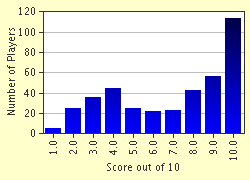Quiz Answer Key and Fun Facts
1. Our quiz starts with Rosh Hashanah, the Jewish New Year. Our hopes and prayers are for a "sweet year". What food typically symbolizes sweetness?
2. Ten days after Rosh Hashanah is Yom Kippur, which, of course, is a fast day! But right on its heels is the holiday of Succoth. What is special about meals eaten on Succoth?
3. Hanukkah is our next holiday, celebrated in winter-time, in the month of Kislev. What special foods are eaten on Hanukkah?
4. Tu B'shvat, or the fifteenth of the month of Shvat, often falls in February, and is a little-known holiday. What food is eaten on Tu B'shvat?
5. What is the Yiddish name of the triangular-shaped pastry eaten on Purim?
6. Passover is one of the three pilgrimage festivals, and an important family gathering. What is the meal eaten on Passover night called?
7. What is unique about foods eaten on Passover?
8. After the Jews left Egypt, crossed the Red Sea and wandered in the desert for seven weeks, they reached Mount Sinai and received the Torah. This important event is commemorated by the holiday of Shavuot. What is traditionally eaten on Shavuot?
9. Tisha B'Av, or the Ninth of Av, is a fast day commemorating the destruction of the First and Second Temples in Jerusalem. For the nine days leading up to Tisha B'av, what do Jews refrain from eating?
10. A traditional dish eaten on the Sabbath is "cholent". What makes this dish special?
Source: Author
janetgool
This quiz was reviewed by FunTrivia editor
LeoDaVinci before going online.
Any errors found in FunTrivia content are routinely corrected through our feedback system.

